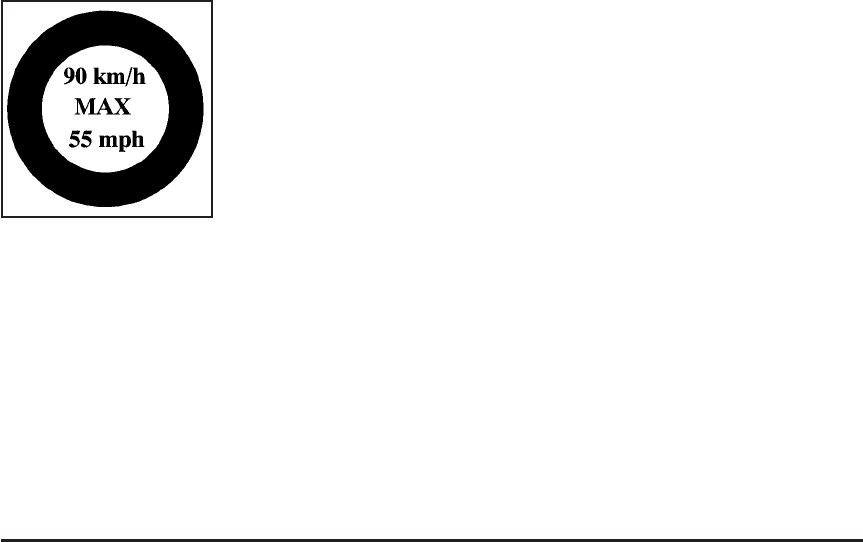
14. Replace the tire valve stem cap.
15. Replace the sealant/air hose (F), and the power
plug (H) back in their original location.
16. If the flat tire was
able to inflate to the
recommended inflation
pressure, remove
the maximum speed
label from the sealant
canister (E) and
place it in a highly
visible location.
The label is a reminder not to exceed 55 mph
(90 km/h) until the damaged tire is repaired
or replaced.
17. Return the equipment to its original storage location
in the vehicle.
18. Immediately drive the vehicle 5 miles (8 km) to
distribute the sealant in the tire.
19. Stop at a safe location and check the tire pressure.
Refer to Steps 1 through 11 under “Using the Tire
Sealant and Compressor Kit without Sealant to
Inflate a Tire (Not Punctured).”
If the tire pressure has fallen more than 10 psi
(68 kPa) below the recommended inflation pressure,
stop driving the vehicle. The tire is too severely
damaged and the tire sealant cannot seal the tire.
See Roadside Service on page 7-8.
If the tire pressure has not dropped more than
10 psi (68 kPa) from the recommended inflation
pressure, inflate the tire to the recommended
inflation pressure.
20. Wipe off any sealant from the wheel, tire, and
vehicle.
21. Dispose of the used sealant canister (E) and sealant/
air hose (F) assembly at a local dealer/retailer or in
accordance with local state codes and practices.
22. Replace it with a new canister available from your
dealer/retailer.
23. After temporarily sealing a tire using the tire sealant
and compressor kit, take the vehicle to an authorized
dealer/retailer within a 100 miles (161 km) of driving
to have the tire repaired or replaced.
5-95


















